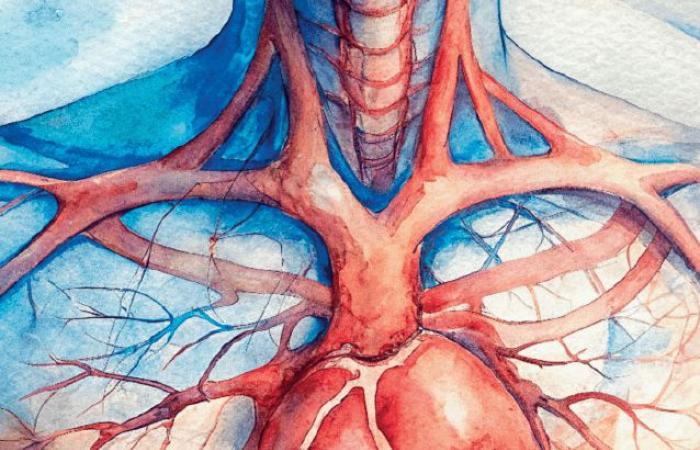Rhythmology and interventional rhythm
Published on 04 nov 2024Lecture 4 min
A file produced with the collaboration of Sok-Sithikun Bun
AF ablation and heart failure with preserved ejection fraction This is a Chinese cohort study analyzing the 39-month follow-up of patients with heart failure (HF) with preserved ejection fraction and AF, including 392 having had an ablation and 642 under drug treatment alone. The benefit of ablation was achieved in the composite endpoint including all-cause mortality and rehospitalization for worsening HF with an HR of 0.55 (95% CI 0.37-0.82, p = 0.003). There was a 33% reduction in AF/AT recurrences in the ablation group compared to the drug treatment group (HR = 0.67, 95% CI 0.54-0.84, p < 0.001). Xie Z et al. Ablation for atrial fibrillation improves the outcomes in patients with heart failure with preserved ejection fraction. Europace 2023; 26(1): euad 376. Post-ablation follow-up of patients with high-risk Brugada syndrome refusing defibrillator implantation This study, also from China, compared the 46.2-month follow-up of 40 patients with symptomatic Brugada syndrome ( 43.8 ± 9.6 years, 90% men, 40% SCN5A mutated): 22 implantable automatic defibrillator (ICD) wearers, 18 refusing the ICD and benefiting from epicardial endocardial substrate ablation (66.7% ). The primary endpoint (episodes of ventricular fibrillation and/or sudden death) during follow-up was significantly more frequent in the ICD group compared to the ablation group without ICD (54.5 vs 5.6%, p = 0.012). Li L et al. Outcomes of catheter ablation in high-risk patients with Brugada syndrome refusing an implantable cardioverter-defibrillator implantation. Europace 2023; 26(1): euad 318. Removal of the posterior wall by electroporation Bern's team reports its experience of isolating the posterior wall in 215 patients (median age 70 years, 70% men, 67% redux procedures) in electroporation with 100% acute success. Two severe complications: tamponade and femoral vascular injury. The rate of patients free of arrhythmia at one year was 53% (monitored by Holter from one week to 3, 6 and 12 months). 12% of patients had a new procedure after an average time of 6.9 months showing lasting isolation of the posterior wall in 85% of cases. Kueffer T et al. Posterior wall ablation by pulsed-field ablation: procedural safety, efficacy, and findings on redo procedures. Europace 2023; 26(1). Embolic accidents in AF patients with CHA2DS2-VASc score 1: Danish registry 22,915 patients with AF and CHA2DS2-VASc score 1 were included in this Danish registry spanning from 2000 to 2021. After a median observation time of one year, the cumulative incidence of arterial embolic events was not different (p = 0.15) between the various subgroups of patients. Østergaard L et al. Arterial thromboembolism in patients with atrial fibrillation and CHA2DS2-VASc 1: a Nationwide Study. Traffic 2024; 149(10): 764-73. Reduction in the risk of dementia in patients undergoing AF ablation This Swedish team retrospectively compared 5,912 patients who underwent a first AF ablation between 2008 and 2018, with 52,681 control patients from a patient registry . Two equivalent cohorts were extracted (n = 3,940) from these 2 groups with the same clinical characteristics using a propensity score; 94.5% were taking oral anticoagulant treatment at the start of the study and 75% at the end. Over a follow-up of 4.9 ± 2.8 years, ablation was significantly associated with a lower risk of dementia compared to the control group: HR = 0.44, 95% CI 0.28-0.89, p = 0.017. The result was maintained by including patients with a diagnosis of stroke before inclusion, or after adjustment with the competitive risk of death. Åkerström F et al. Reduced dementia risk in patients with optimized anticoagulation therapy undergoing atrial fibrillation ablation. Heart Rhythm 2024: S1547-5271(24): 02365-8. Anticoagulant treatment during electrophysiology interventions This review provides an overview of periprocedural anticoagulation during electrophysiology and coronary angiography procedures. The figure below summarizes the suggestions for managing antithrombotics for rhythmology interventions. Periprocedural anticoagulation is not mandatory for right ventricular tachycardia (VT) ablations (class I, level C). The authors suggest starting anticoagulation for one month after left TV ablation, in patients not previously anticoagulated. For left accessory pathway ablations, the authors recommend an initial dose of 90-200 IU/kg followed by 1,000 IU/h during the procedure. Unless it is a patient at high embolic risk, electronic prosthesis implantation with minimal interruption will not exceed 24 hours preceding implantation with resumption within 12-24 hours after the procedure (last dose on morning regarding direct oral anticoagulants). Di Biase L et al. Antithrombotic therapy for patients undergoing cardiac electrophysiological and interventional procedures: JACC State-of-the Art Review. J Am Coll Cardiol 2024; 83(1): 82-108.
Please note, for regulatory reasons this site is reserved for health professionals.
To see more, register for free.
If you are already registered,
log in:
If you are not yet registered on the site,
register for free:






